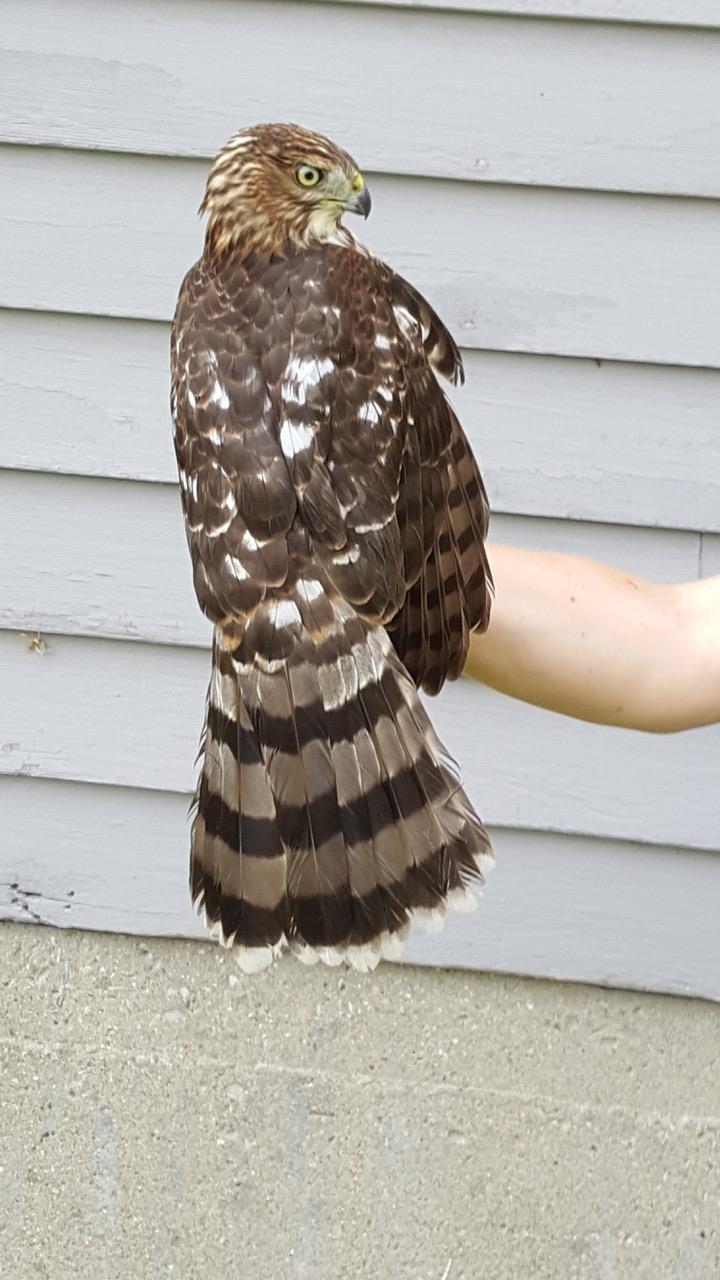
It was another hot Summer day and, birdwise, a lazy Summer day. Not much on the go either at Ruthven or at Fern Hill Oakville. But then, for Nancy at Ruthven, all hell breaks loose in the form of a Cooper’s Hawk in the net. And not only was it in the net, it was quite tangled in the net. But she managed to extract it and then apply a “lock-on” band, which is a much trickier band to apply. She’s a true professional!
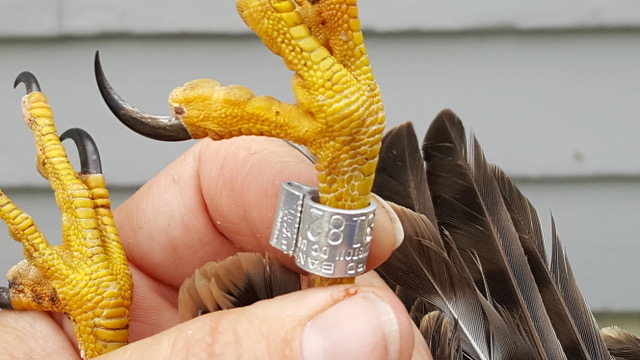
Banded 26:
1 Cooper’s Hawk
1 Red-bellied Woodpecker
2 Northern Flickers
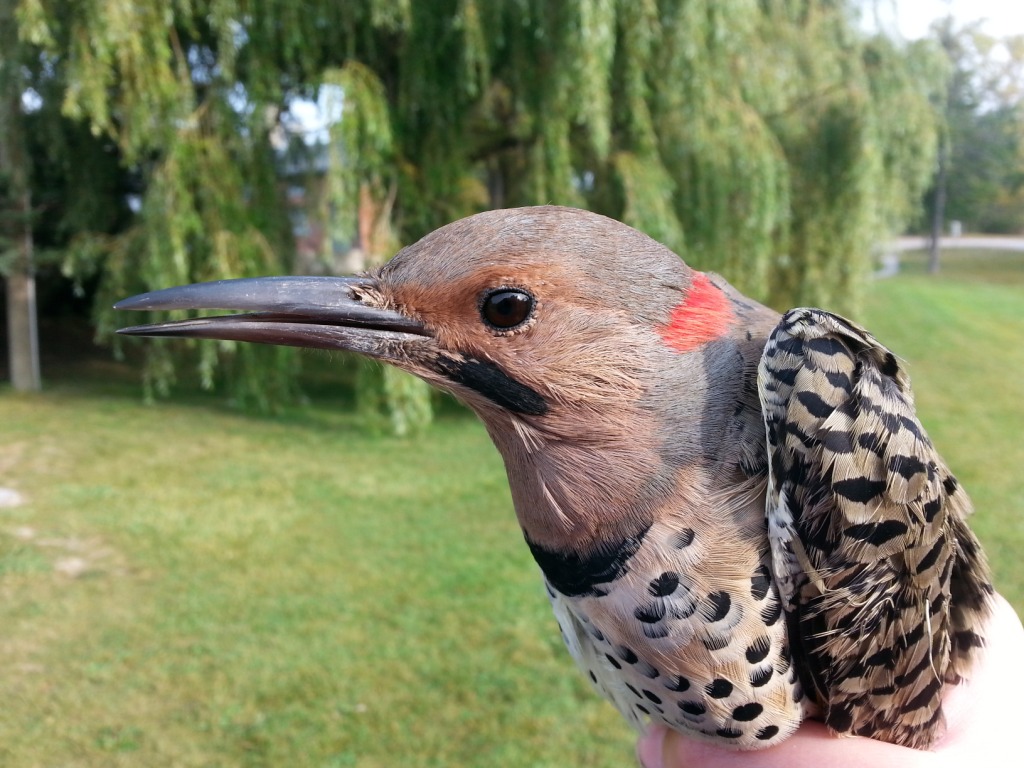
1 Eastern Wood Pewee
1 Least Flycatcher
1 House Wren
2 Swainson’s Thrushes
1 American Robin
4 Gray Catbirds
4 Cedar Waxwings
2 Red-eyed Vireos
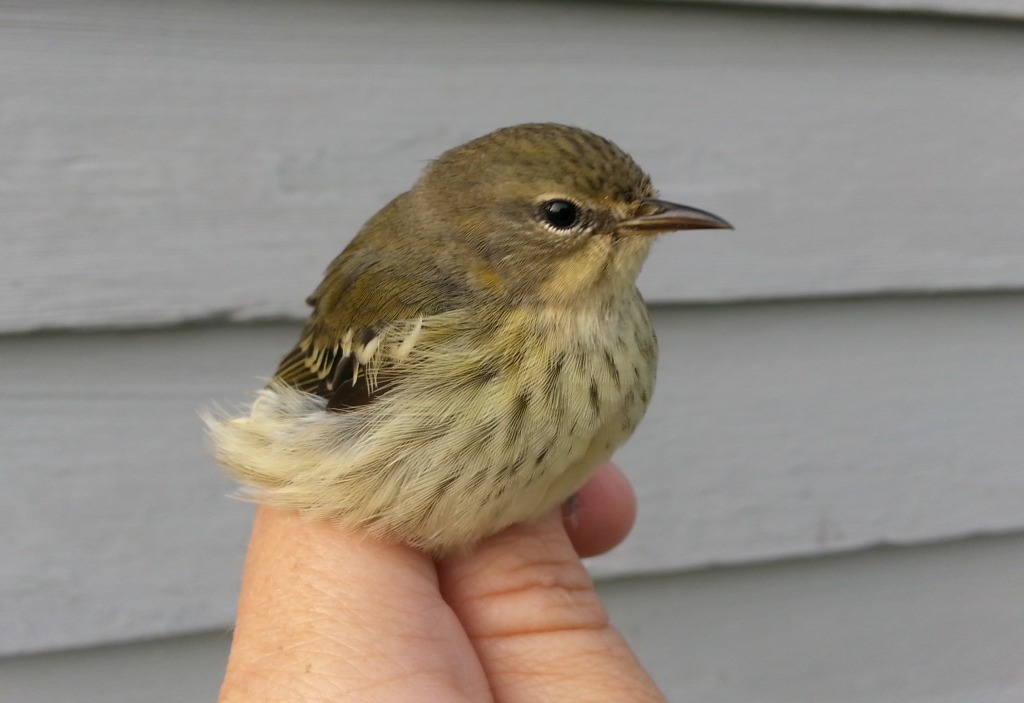
1 Cape May Warbler
2 Blackpoll Warblers
1 Ovenbird
2 Song Sparrows
ET’s: 30 spp.
Fern Hill Oakville Campus:
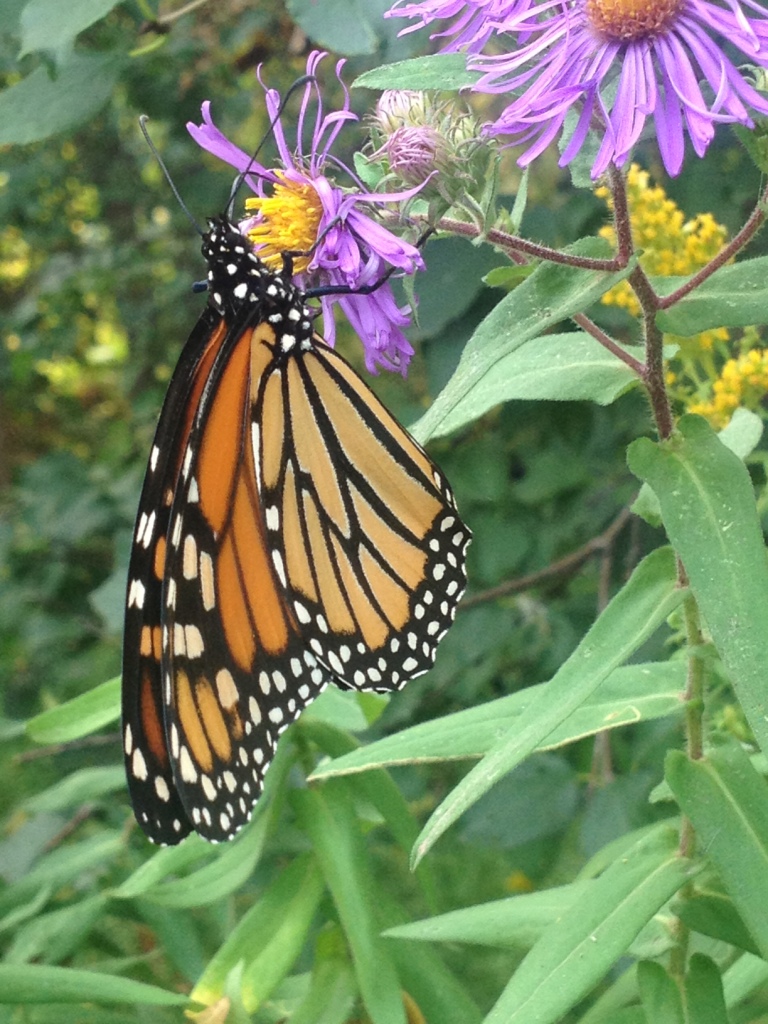
I was at Fern Hill’s Oakville campus today. The birding/banding was unspectacular (although we did get a nice Blackpoll Warbler!). But the main event belonged to an insect: the Monarch Butterfly. Early on we began to notice a number of these magnificent butterflies passing by and, so, decided to count them. We were amazed when they just kept coming and coming, streaming by from East to West all day long. By the end of the afternoon we had counted 330!! This would be an underestimate of the passing horde as they were going by on a broad front and we could only count one side of the property at a time – and they would have been passing by on both sides……
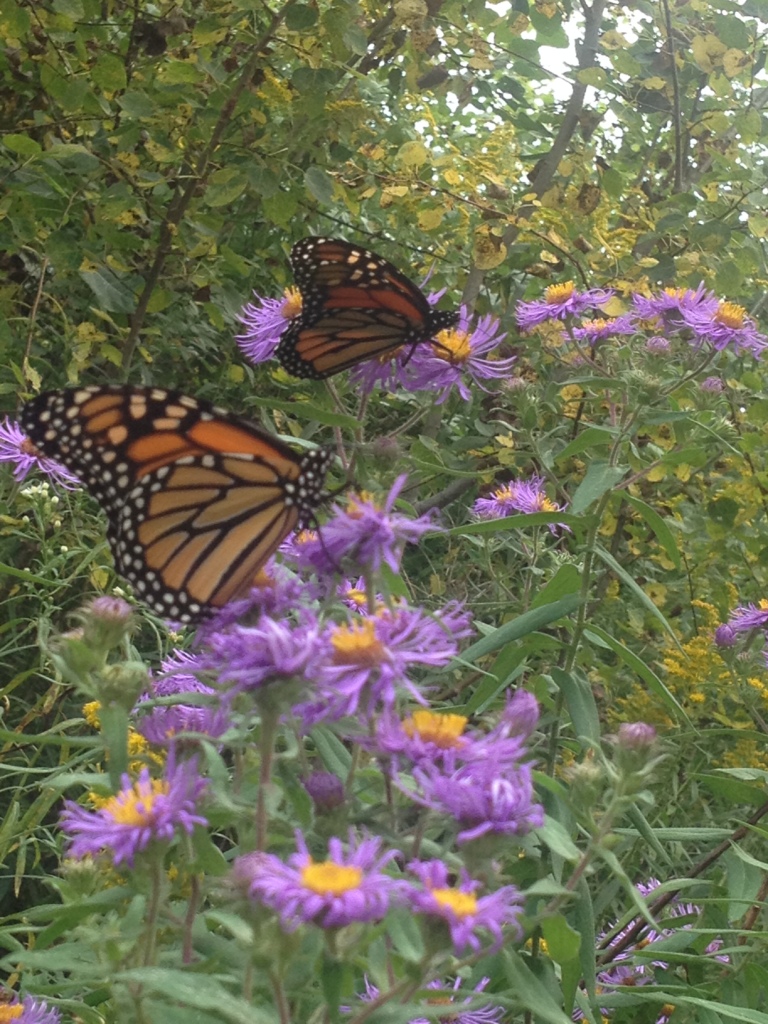
Watching them, it came home to me just how important “waste” spaces are for these insects mow. They were drawing sustenance wherever they could from patches of goldenrod and asters. On the south side of the school there is a large field filled with these flowers (and, during the Spring, with Bobolinks and Savannah Sparrows) and around the property (and bordering cemetery) there are stands of both goldenrod and asters – much used by the butterflies.
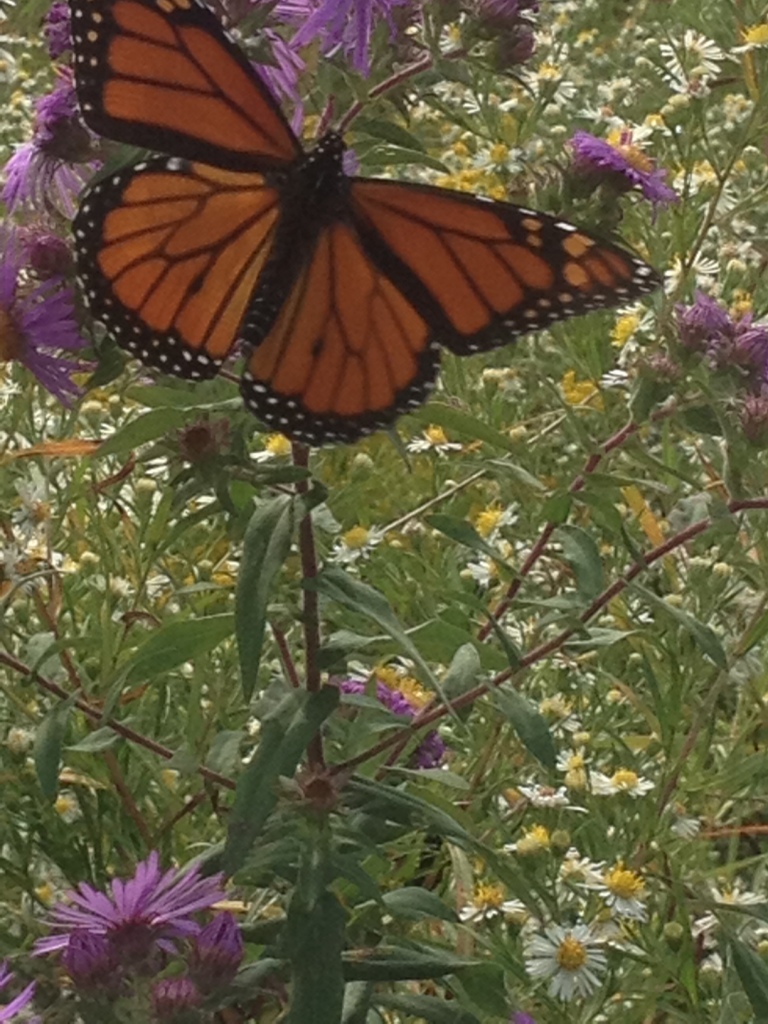
When you look to the East – the direction from which they’re coming – you see a huge soybean field, then highway 403, and then the skyline of Mississauga. What sustains these butterflies through the city? And as urban sprawl continues to spiral out of control it seems what will their future be in southern Ontario?
Banded 5:
1 Blackpoll Warbler
4 Song Sparrows
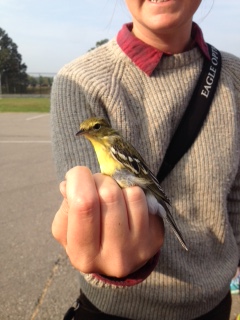
Rick
